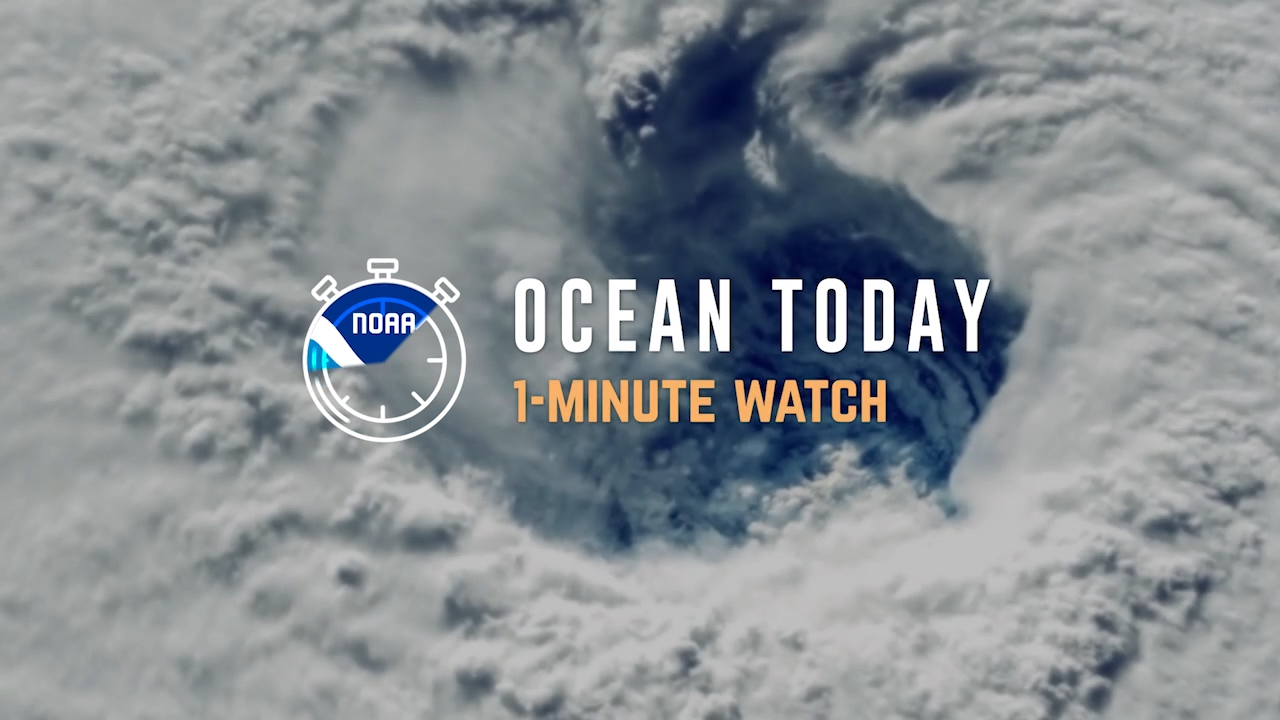
At Ocean Today, a program of the National Oceanic and Atmospheric Administration (NOAA), we enhance people's understanding of the ocean realm—from the deep sea to the upper atmosphere—through enticing multimedia that illustrates both the ocean's influence on them and their influence upon the ocean. This enhanced understanding is called "ocean literacy."
With that objective in mind, we set out to create a video featuring the work of one of our hurricane scientists, Renee Richardson. The video achieves three objectives in 60 seconds; 1) telling the story of how Renee got interested in her field of work; 2) giving an overview of what a hurricane scientist does, and; 3) perhaps most importantly, encouraging young viewers—particularly young girls—to pursue their interest in science.
The video was the first in what will be an ongoing series of "1-Minute Watch" videos, highlighting various ocean-related topics in a fast-paced format. By focusing on careers at NOAA in some of these videos, we also hope to inspire future generations of oceanic and atmospheric scientists who may even want to pursue their own "cool career" at NOAA!
At Ocean Today, we have been experimenting with new video lengths and formats to better serve our audience. We realize attention spans can be short, particularly with a young audience, so we decided to begin producing a new series of "1-Minute Watch" videos that still carry out our mission of increasing ocean literacy while also reaching new audiences. This video was our first project that was designed to go on Instagram from the start, in addition to our usual posts to the web and other social media channels.
The first step was finding an engaging subject, and Renee fit that requirement with her eloquent way of talking about hurricanes and her passion for what she does at NOAA. Next, we filmed an interview with her in our studio and edited a 60-second piece that tells a full story while holding the viewer's attention. Renee also serves as a role model for young girls who may be interested in science and we wanted to make sure her message to them was a key part of the video.
New graphics were also created to give the "1-Minute Watch" format a unique look and feel. Most notably, we included a countdown clock so the viewer knows exactly how much time is left in the video as they watch. The clock also serves to make sure that not a second is wasted in the edit and the viewer is engaged throughout.
Last, we worked with other line offices at NOAA to amplify the video by cross-posting it on their social media channels.
Since publishing in September 2022, the video has achieved over 28,000 views on Instagram, over 3,500 views on Twitter, nearly 2,000 views on Facebook, over 1,200 views on YouTube, and nearly 1,000 views on the Ocean Today website. We consider the video to be a big success particularly on Instagram as the short "1-minute watch" format fits the platform well and our effort to create a version specifically formatted for the vertical layout paid off.
Additionally, we have shared the video with nearly 60,000 educators through the Ocean Today network, the National Marine Sanctuaries, and the Planet Stewards teacher listserv, thereby reaching a new generation of ocean scientists who are currently involved with STEM in their classrooms.
The video is also viewable on a kiosk network at nearly three dozen museums and aquariums across the world, including the Smithsonian Institution’s National Museum of Natural History, which had nearly four million visitors in 2022. The format is perfect for that platform, as we have observed that museum visitors tend not to stay at the kiosk for more than a couple minutes before going onto the next museum exhibit.


